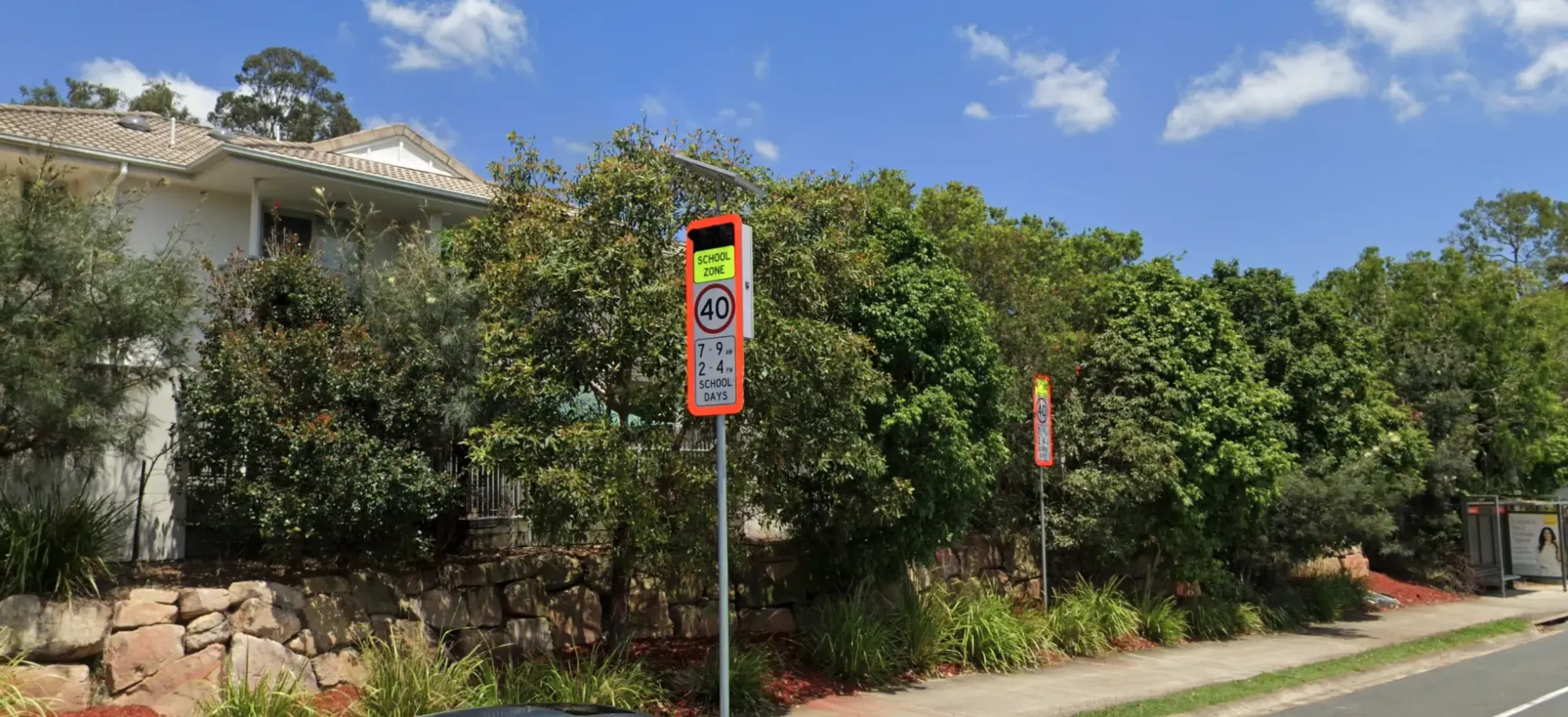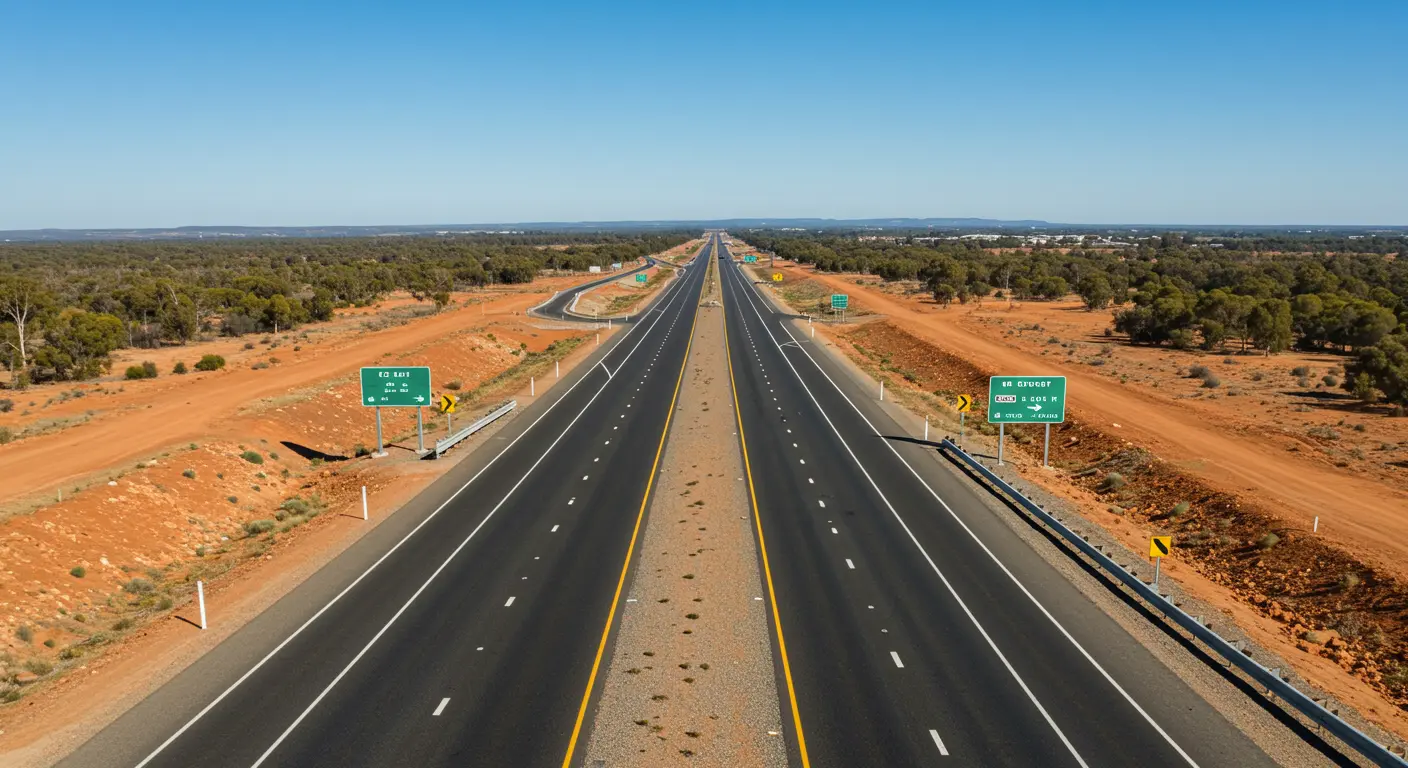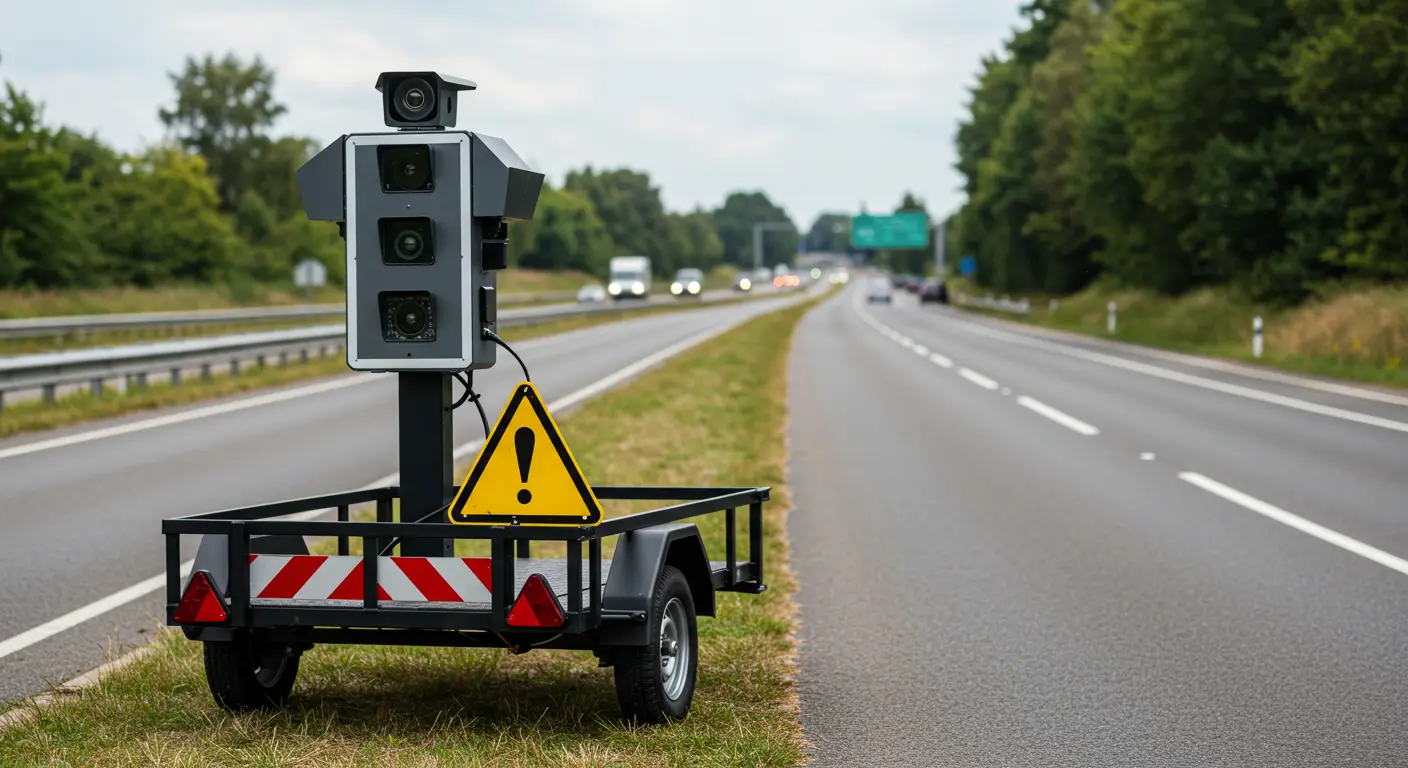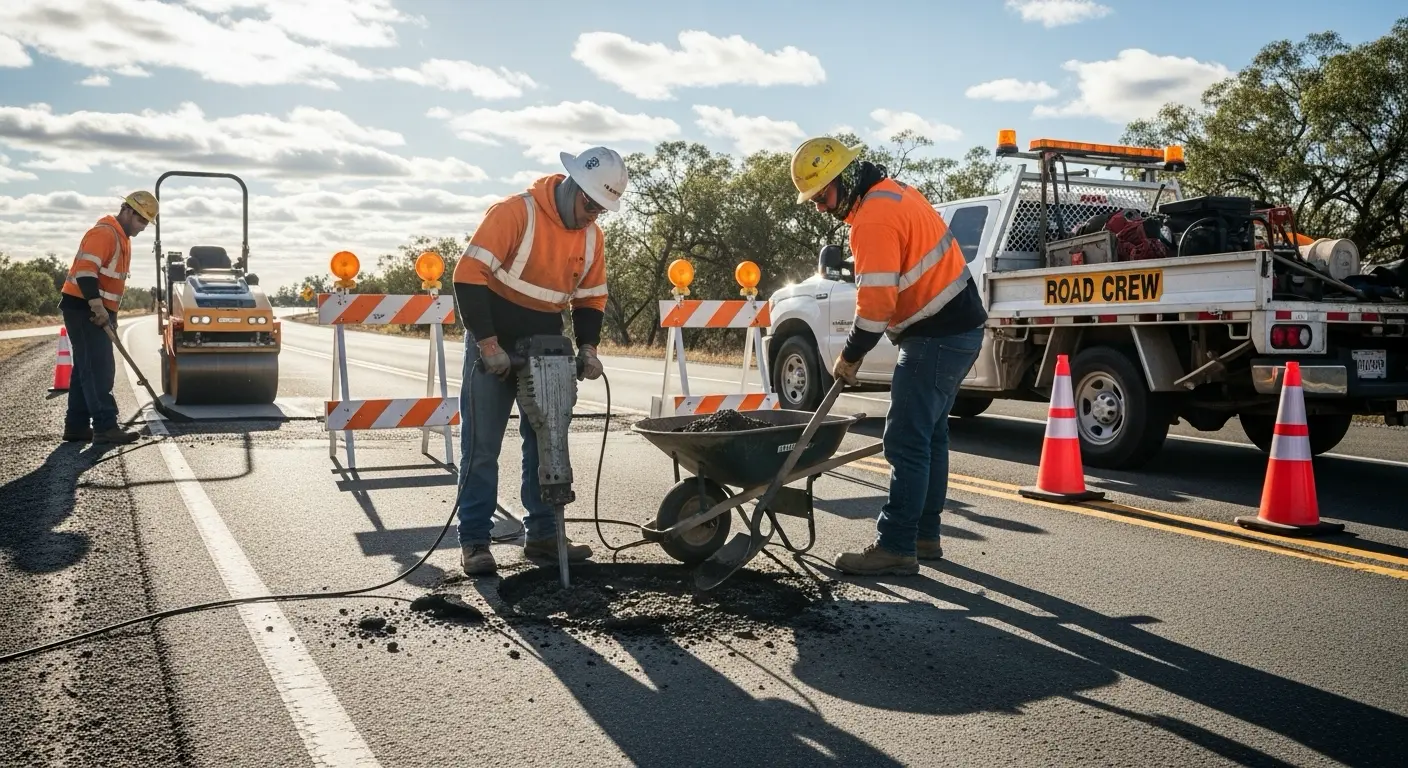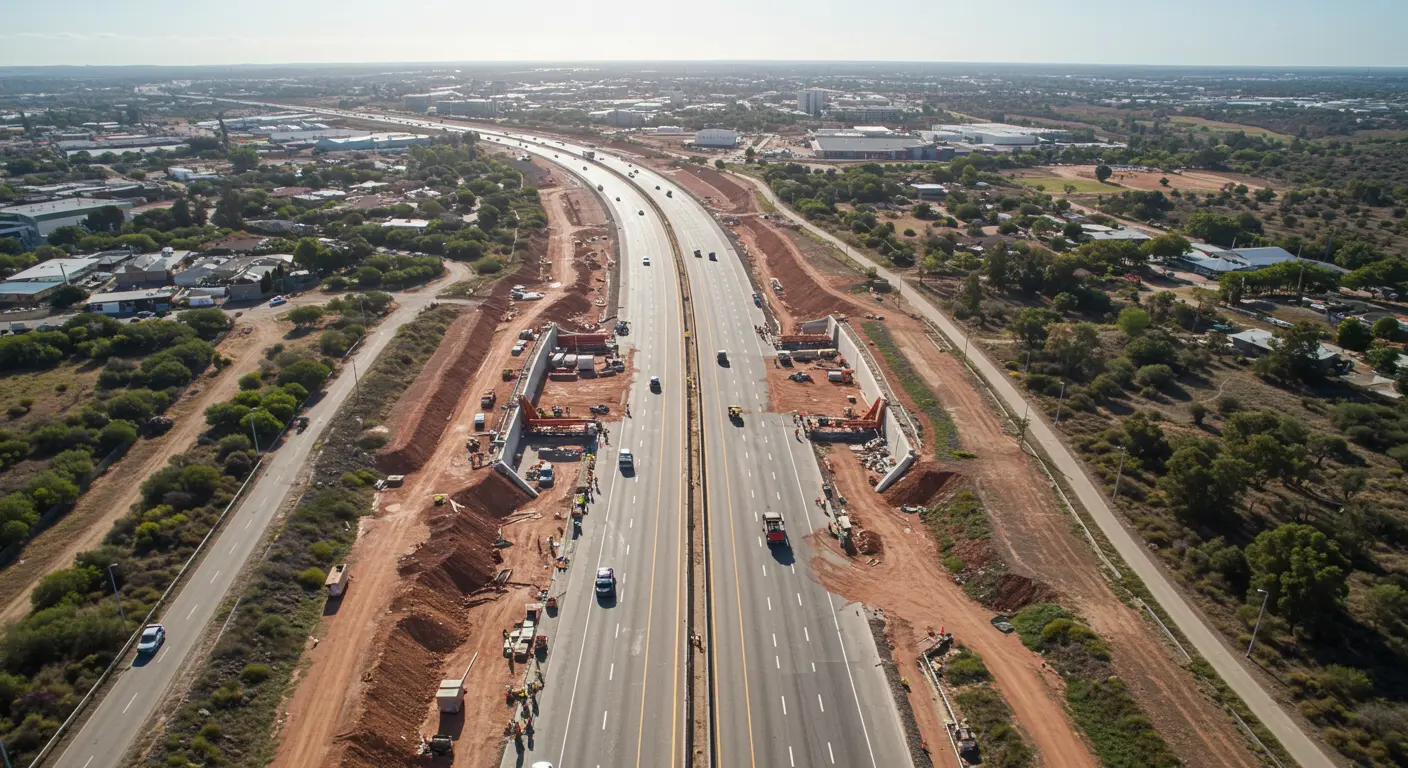Friday morning's commute turned into a nightmare for hundreds of motorists on one of Australia's busiest transport corridors after a truck spilled tonnes of metal debris across a 30-kilometer stretch of the M1 Motorway. The incident has created widespread disruption, causing significant economic impacts beyond just the immediate traffic delays.
The Incident: Metal Shards Create Highway Havoc
At approximately 5am on Friday, May 2, 2025, a truck hauling approximately 40 tonnes of scrap metal lost part of its load while traveling southbound between Palmdale and the Mooney Mooney Bridge, north of Sydney. The rear door of the trailer unexpectedly opened, scattering thousands of jagged metal fragments across the highway. The result was immediate and devastating – hundreds of vehicles sustained punctured tyres as they drove over the nearly invisible shards in the early morning conditions.
"It was pandemonium," said commuter Jon Heaney, who witnessed the aftermath. "Cars were all over the shoulder, some still stuck in the left lane. I passed dozens on the verge with flat tyres." Another motorist reported that heavy fog and lack of warning signage contributed to the severity of the situation, saying "There was no chance to avoid it. You couldn't see the metal in time."
The M1 Motorway, which serves as the critical link between Sydney, the Central Coast, and Newcastle, carries an average of approximately 41,000 vehicles in each direction daily. This includes a heavy volume of freight traffic, with the Sydney-Newcastle corridor being one of Australia's busiest transport routes.
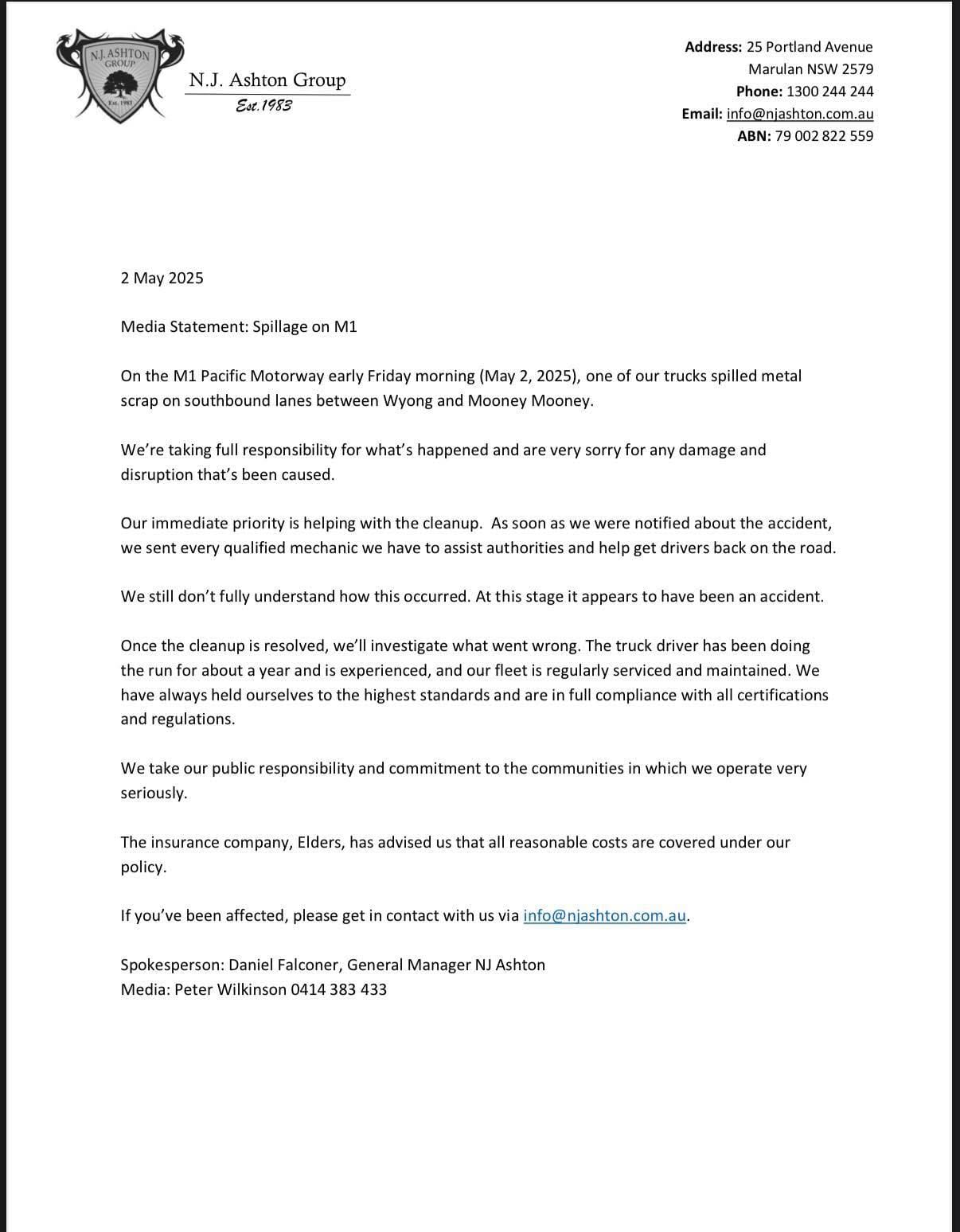
Economic Impact: More Than Just Flat Tyres
Widespread Vehicle Damage
Preliminary reports from transport officials suggest as many as 380 vehicles may have been damaged in the incident. By mid-morning, authorities had confirmed at least 145 vehicles were disabled and pulled over due to blown tyres. In many cases, vehicles sustained damage to multiple tyres, complicating roadside repairs.
With an average replacement cost of $200-300 per tyre for standard passenger vehicles and significantly more for commercial vehicles, the direct damage cost likely exceeds $100,000. The trucking company responsible for the spill, NJ Ashton, has accepted full responsibility and stated their insurance will cover all damage claims.
Productivity Losses
With the M1 being a major commuter route, the economic impact extends well beyond vehicle repairs. The southbound closure between Ourimbah and Mount White forced thousands of workers to either be substantially delayed or miss work entirely.
For the approximately 40,000 vehicles that would typically travel southbound on this section of the M1 daily, the disruption represents thousands of lost work hours. Even for those who found alternate routes, the significant delays resulted in substantial productivity losses. Using conservative estimates based on average Australian hourly wages, the lost productivity likely amounts to millions of dollars across all affected businesses and individuals.

Impact on Heavy Vehicle Operations
Disruption to Regulated Driving Hours
The timing and location of the incident created particular challenges for commercial truck drivers. The M1 serves as the primary freight corridor connecting Sydney with northern New South Wales and Queensland, with heavy vehicles comprising a significant portion of daily traffic.
Australian regulations strictly limit driving hours for truck drivers. Under standard hours requirements, drivers:
- Must not work more than 12 hours in a 24-hour period
- Must have at least 7 continuous hours of stationary rest time in a 24-hour period
- Cannot exceed 72 hours of work time in a 7-day period
For many truck drivers caught in the disruption, the extended delays threatened to push them over their legal work hour limits. This created a logistical nightmare as drivers needed to account for unexpected stationary time while still completing deliveries within regulated timeframes.
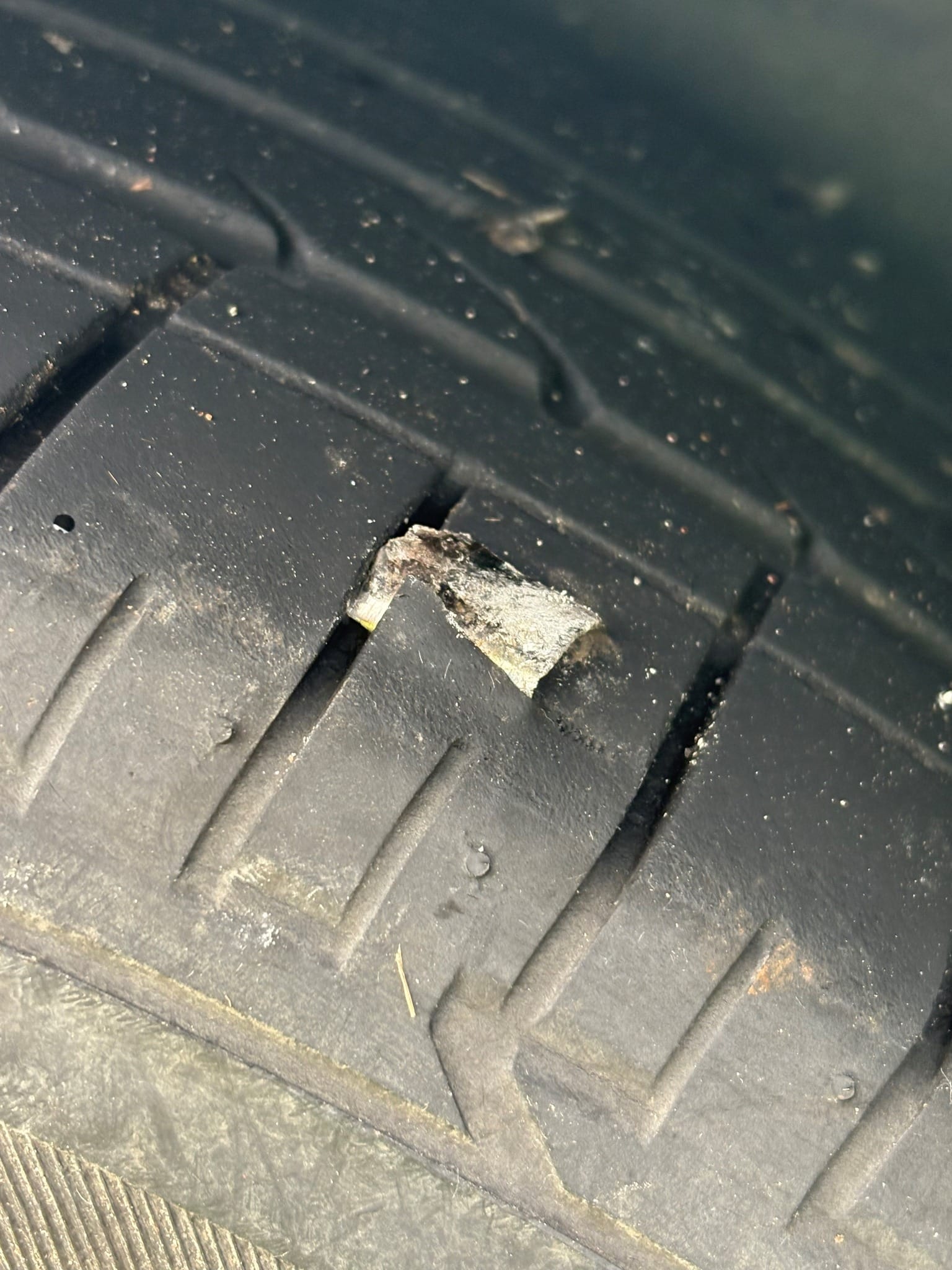
B-Double Dilemma
The situation was particularly problematic for B-double trucks, which were immobilized with limited ability to turn around. While light vehicles were diverted onto the Old Pacific Highway at Ourimbah, this route was unsuitable for B-doubles, forcing them to simply park and wait for the motorway to reopen.
"We've had to instruct drivers to park up until the Motorway reopens," explained a logistics coordinator for a major transport company. "Each hour these trucks sit idle costs us significantly in terms of missed delivery windows, driver wages, and schedule disruptions throughout the entire supply chain."
Secondary Impacts: Fuel Waste and Basic Needs
The extended stoppage created additional challenges beyond just delays. Hundreds of vehicles idling in traffic or running engines periodically during the wait resulted in substantial fuel waste. For heavy vehicles, which can consume 3-4 liters of fuel per hour while idling, the collective fuel wastage represents both an economic and environmental cost.
More pressing for many drivers were basic human needs. With limited facilities along the closed section of motorway and vehicles unable to exit, drivers and passengers faced increasing discomfort as hours passed without access to toilet facilities or food. This was especially problematic for families with children and elderly passengers.
Clean-Up Operation: A Painstaking Process
The clean-up operation presented unprecedented challenges. Transport Management Centre coordinator Howard Collins described the situation: "We've had 145 vehicles disabled and pulled over due to blown tyres, but there is metal everywhere. It's going to take hours."
NSW Roads Minister Jenny Aitchison characterized the clean-up as "like trying to vacuum up the highway," noting that "small pieces of metal are extremely difficult to remove." Standard road sweepers proved inadequate for the task, requiring specialized equipment.
The trucking company deployed magnetic sweepers to aid emergency crews in locating and removing debris from the road surface-a painstaking process complicated by the small size and sharpness of the fragments. The operation involved coordination between multiple agencies including NSW Police, fire services, road crews, and private contractors.
The cost of such an extensive clean-up operation, including personnel, specialized equipment, traffic management, and emergency services, likely runs into hundreds of thousands of dollars. Additionally, the economic impact of keeping a major highway closed for nearly a full day adds significantly to the total cost of the incident.
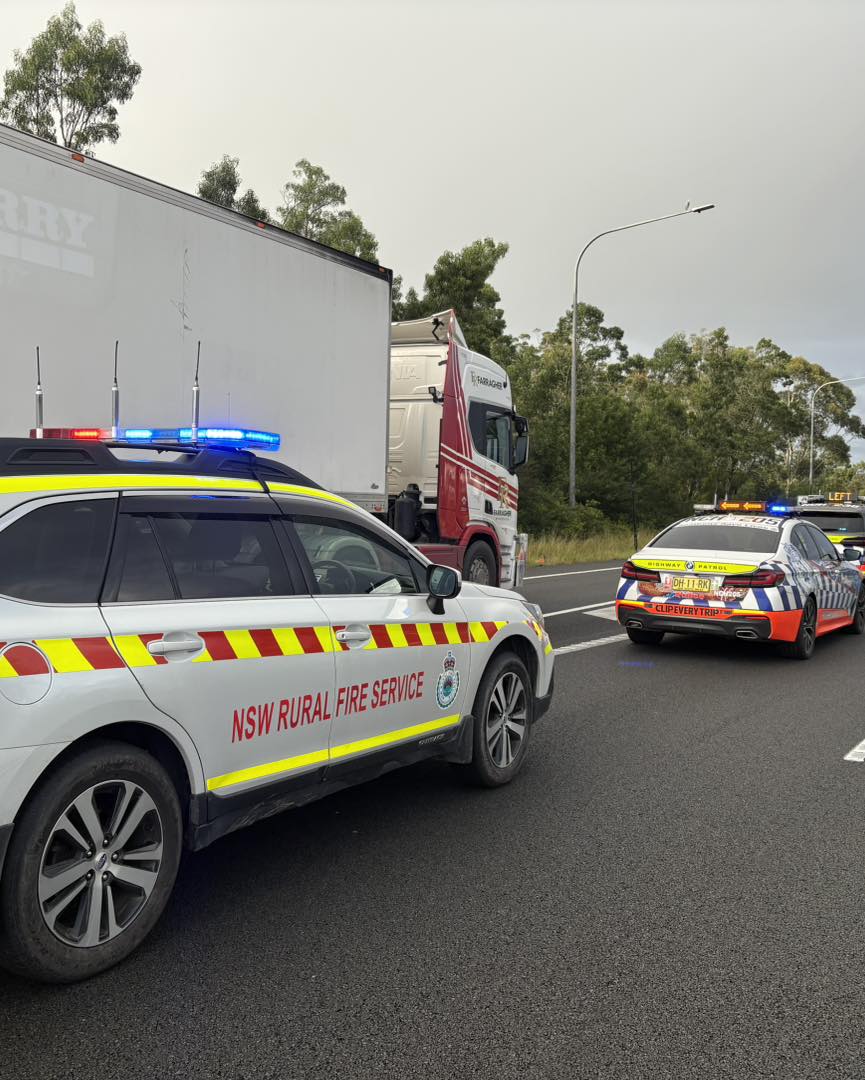
Looking Forward: Insurance and Accountability
NJ Ashton spokesperson Daniel Falconer confirmed the company's liability: "It's definitely on us. We don't know whether it was mechanical failure or something else, but our insurance will cover all the damage. Anyone affected should get in touch."
Transport authorities will likely conduct a thorough investigation to determine the exact cause of the spill and whether any safety regulations were violated. The incident highlights the critical importance of load security on Australia's busy highways.
Final Comments
Friday's metal spill on the M1 serves as a stark reminder of how quickly a single incident can cascade into widespread disruption across an entire transportation network. Beyond the immediate inconvenience to drivers, the economic ripple effects touch numerous businesses and industries that rely on this vital corridor.
As clean-up efforts continue and affected motorists begin the process of seeking compensation, questions remain about how similar incidents might be prevented in the future. For now, the priority remains restoring normal operations to one of Australia's most critical transportation arteries.










